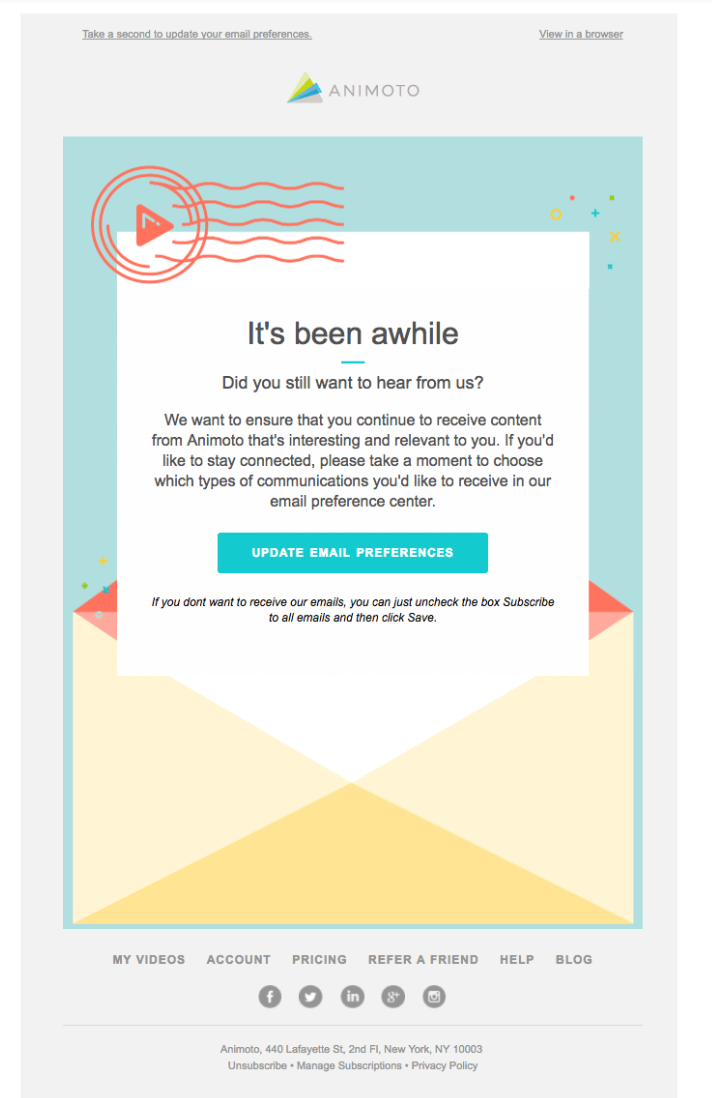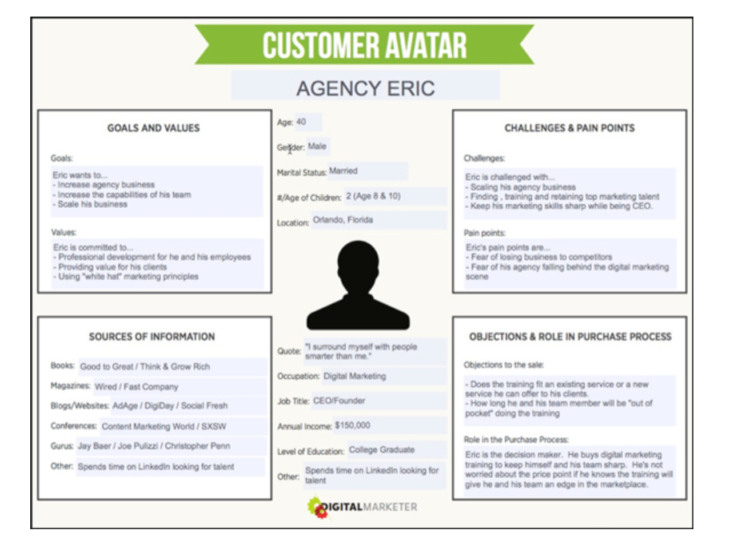Here are some common types of email segmentation that email marketers use to build a healthy relationship with their subscribers and improve their email marketing metrics.
- Abandoned cart — Shockingly,69% of online shopping carts get abandoned. And while that might just discourage your from selling online altogether, it shouldn’t. In fact, those abandoned carts just represent an opportunity for you to beat the competition and increase your conversion rate. 40% of abandoned cart email are opened, 50% of people who opened, click, and 50% of people who click, complete their purchase. Sometimes, all people need is a little reminding about what they left behind. This is an easy segmentation that you can create and automate to make more sales. Here’s an example of what it might look like.

- Re-engagement — When subscribers haven’t engaged with your emails for a while (often between 6 months to 12 months), it’s a good time to put them into a re-engagement email sequence. The purpose of this usually automated series of emails is to get near-lost subscribers opening and clicking your emails again. Sometimes, just a single engagement now means more engagements later if the subscriber enjoys the content. After all, if they haven’t engaged over the last few months, they can’t know whether they like your emails or not.

- Demographic — You might also decide to create a segmentation based on the different demographics of people on your list. You could, for example, send lower-ticket offers to people who make under $100k per year and high-ticket offers to people who make over $100k per year. Or you could send different offers to men and women. Or even to different age groups. The primary way to collect demographic information for your list is through surveys, or through a post opt-in questionnaire that you ask all subscribers to fill out.
- Survey results — If you’ve never done it before, sending a survey to your list can be a wildly revealing process. You can learn loads about the people who read your emails; what they desire, what they struggle with, and how they want you to help them. Based on the information you collect, you can then create different email segmentations that send more relevant content and special offers to your audience. You can use SurveyMonkey to create surveys, send them to your list, and collect the results.
- Email engagement — How much someone engages with your email list is often indicative of how much they trust your business, appreciate your content, and fit within your target market. The more that someone opens and clicks, the better chance that they’ll eventually buy. The less that someone opens and clicks, the likelier they are to eventually unsubscribe. And you can create different segmentations for different levels of commitment. Some people might want to receive an email every day from you and some might only want one per week. Some people might want to buy everything you have to sell while others need more convincing. Send each subscriber what they want, when they want it, and they’ll stick around a lot longer.
- Audience persona — Like any good marketer, you should have a documented list of different typical subscriber personas that your business encounters. Often, this includes an uninterested subscriber, a skeptical subscriber, and a gung-ho, ready-to-go subscriber. Naturally, you should send each of these different audience personas content and special offers relevant to them and their position in your sales funnel. If someone just joined your list, for instance, don’t pitch your high-ticket program to them tomorrow, but put them in a relationship-building email sequence. And if someone has been on your list for more than 6 months, you should probably send them product discounts and coupons every now and again. The point is, let the subscriber dictate what you send and when you send it.

- Personal interests — The ultimate goal of email segmentation is to send your subscribers content that they’re interested in, and by so doing, increase engagement and conversion rate. But before you can create segmentations which send subscribers content and offer that they are interested in, you first have to determine what they are interested in. Collecting surveys and behavioral data (Which lead magnet did they download? Where have they spent the most time on your website? What product(s) have they viewed, added to their cart, or purchased?) will give you just the information you need.
